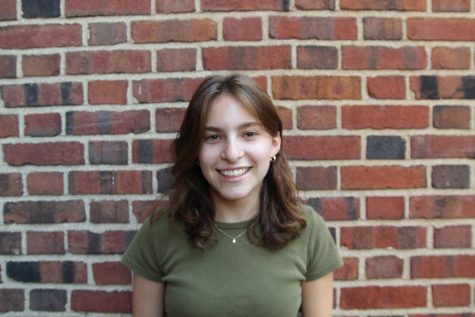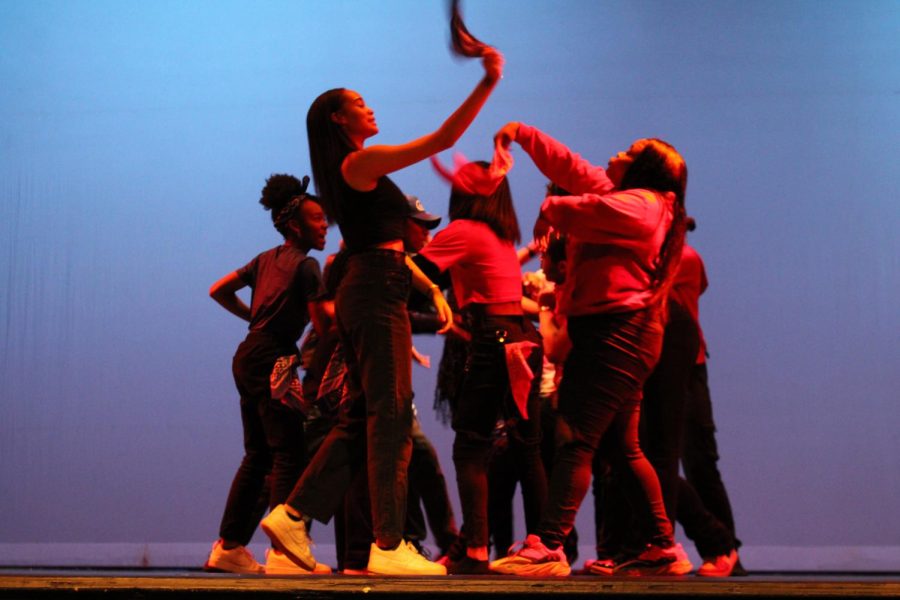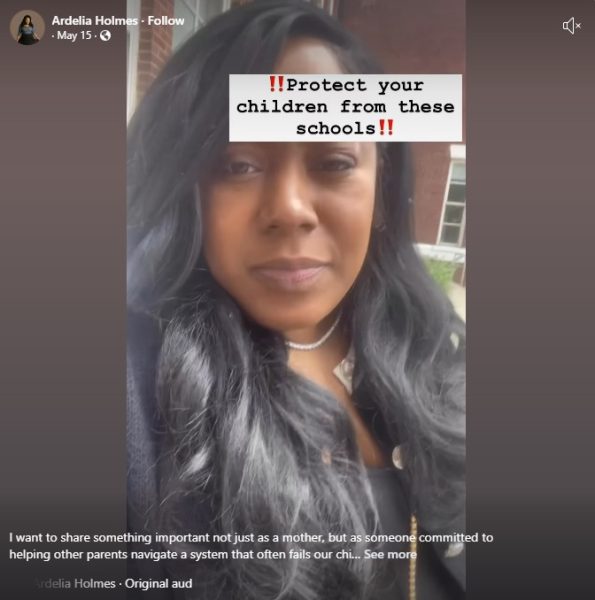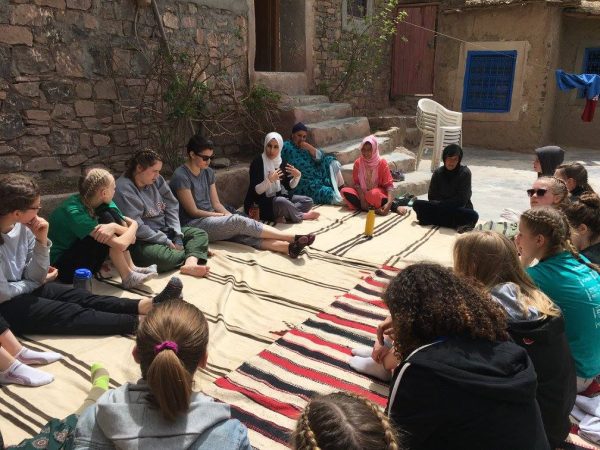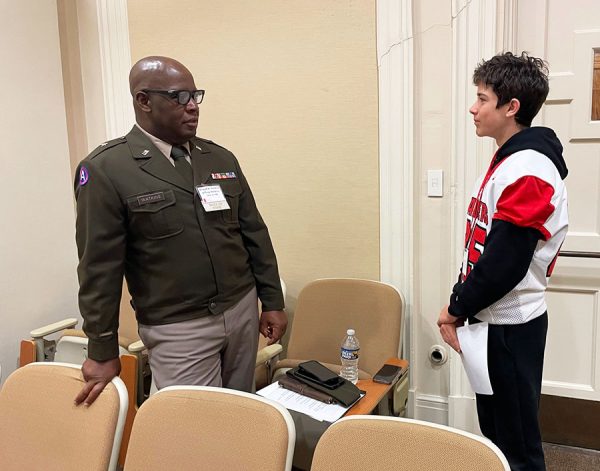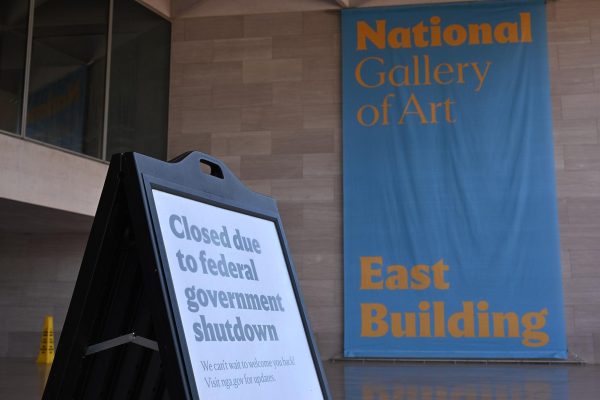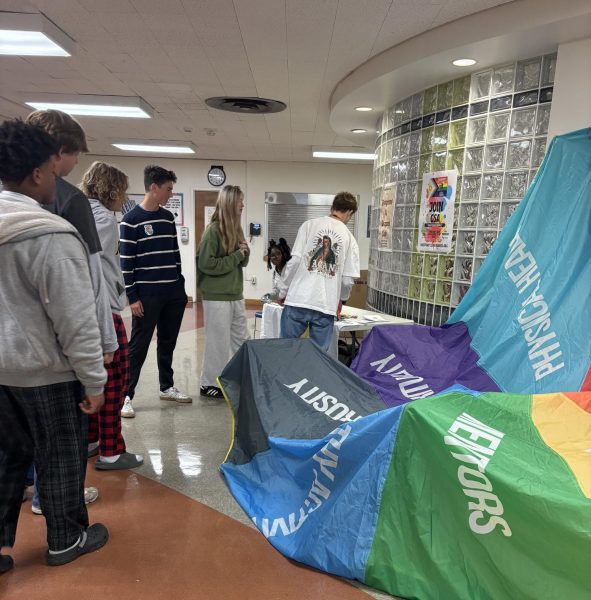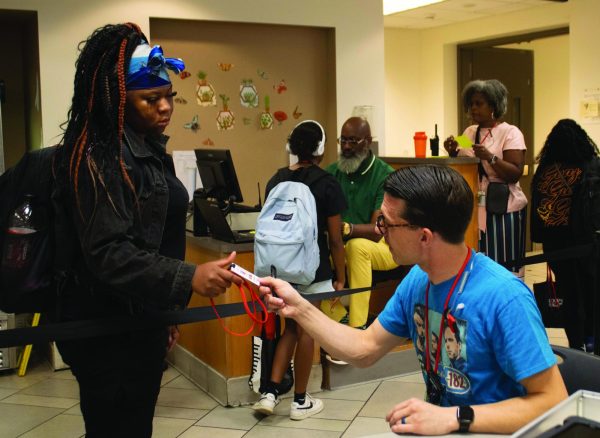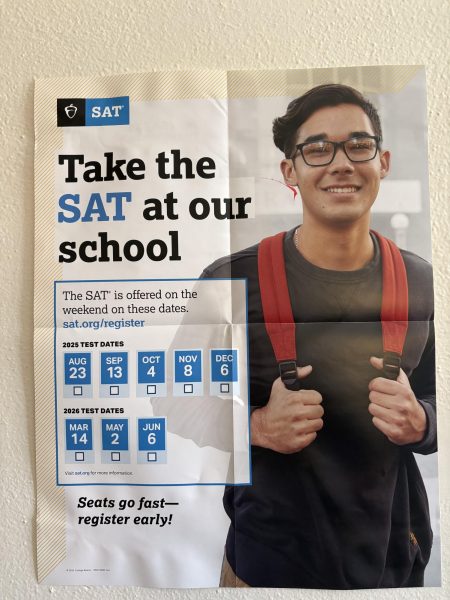Sankofa 2023: Restitution! Taking Back What Was Taken
Students raise important questions in annual preformance
African dancers move joyously across the stage before slave catchers abduct them. Minutes later, police officers and prison guards menace Black citizens.
The stark contrast depicted in the opening of Sankofa 2023 set the tone for this year’s theme: “Restitution! Taking Back What Was Taken.” The annual student-written, produced and performed event explored the concept through reflecting on Black history, life experiences and moving forward.
The Feb. 26-27 performances in the Large Auditorium showcased the Black talent of Shaker Heights High School through dance, singing, acting and spoken word poetry. A preview performance during school on Friday, Feb. 24 featured singing and dancing performances for students.
Throughout the show, interludes of powerful narration by senior Jakeia Banks were intertwined with performance scenes conveying the themes, such as overcoming struggle. “It’s all about struggle, and as you struggle you have to go through all of these different things, but you do triumph, and that’s what I really wanted to say to people because unexpected things do happen,” Banks said in an interview.
At the beginning of the show, Banks explained the significance of the hooded figure in this year’s poster, which shows the importance of examining the past. “In the poster, there is a hooded figure surrounded by darkness. The past and present struggles of this individual is highlighted all around them, but while the darkness is capable of consuming them, they instead walk toward a bigger, brighter future. So as we experience life, experience struggle, we will also experience profound triumph as we remember and reflect on our history,” Banks said.
The main story plot follows a Black teenage girl named Zoe, portrayed by senior Meilani Walker during the Friday and Sunday shows. Junior Gabrielle Abercrombie portrayed Zoe in the Saturday show. The story also follows a Black teenage boy named Malcolm, portrayed by junior Adam Thompson. The story portrays the tough choices that teens, specifically Black teens, are confronted with.
Art teacher Keaf Holliday has advised Sankofa since 2006. Holliday said that the idea of restitution is rooted in the false promise of “40 acres and a mule”. A wartime order in 1865 promised each freed Black slaves a total of 40 acres of formerly Confederate land and a mule as reparation for their enslavement. The government never followed through with this order, leaving freed slaves with no means of supporting themselves.
Holliday explained the importance of Black restitution in the context of today. “So this idea of restitution is this idea of getting what we deserve. It means working towards our goals, fighting for our rights and receiving all of the benefits that we have coming as a race. We can move in society properly, our children can achieve, and we can see that each generation, growing towards goals that are prosperous,” he said.
Holliday referenced the idea of generational wealth, in which money is passed on through generations. This phenomenon has benefitted white people throughout history. He said that Black people in America have not been able to build generational wealth due to systemic racism such as mass incarceration, educational barriers, and hiring discrimination. This theme is addressed in the show through the main story, in which Malcolm is drawn to dealing drugs as a means to provide for his pregnant girlfriend, Zoe.
Holliday said that generational wealth goes beyond money. “We’re striving to get in a position of generational wealth, where we can pass on a legacy to our children not just with money, but with our own history,” he said.
The themes of Sankofa are universal, according to Holliday. “Because Black history touches all of our history. The thing that I also want people to take away from the show, I guess , is just the sense of resilience, because whether you’re Black or white, all of us have this struggle to overcome an issue in our life,” he said.
Holliday said that he produces Sankofa every year to call attention to Black history. “Because we stand on the shoulders of our ancestors,” he said.
While Sankofa reflects on the past, it also draws attention to current events Black Americans face.
Students began this production with script writing in August 2022. Auditions were held in October, performers cast in November and rehearsal continued until the end of February, until the first show.
Senior Azaria Bryant, a Sankofa performer, said that the show was successful and highlighted the Black talent of Shaker. “I’m just glad Black people as a whole can stand in front of a crowd and actually show some talent, and raw talent, at that. I’m just really proud of this,” Bryant said.
Said Banks, “It feels like we’ve created a story, but we’ve also created lifelong connections with each other, which is what I think Sankofa is all about.”
Comment using your Facebook, Yahoo, AOL or Hotmail account
